Leitz Entfernungsmesser mit 6x15 MonokularDieser mit grünem Hartgummi überzogene Entfernungsmesser von Leitz (# 42969) mit einer 30cm Basis nutzt ein Leitz "Mondal" 6x15 Monokular für die zusätzliche Vergrößerung des Mess-Doppelbildes. Ebenfalls im Segeltuch-Trasnportköcher wird ein Fernröhrechen (Galileischer Art) geliefert - wahrscheinlich 3x Vergrößerung. Beide Monokulare können mit einem Klemmring am Entfernungsmesser befestigt werden. Das 6x15 Monokular mit Seriennummer 235702 hat zum Anvisieren des Doppelbildes eine Strichplatte mit einem zentralen Kreis und eine blanke Objektivfassung. Das Gehäuse ist wie der EM grün ummantelt. |
Leitz Rangefinder with 6x15 MonocularThis Leitz 30cm base range-finder covered with green Ebonite (# 42969) is equipped with a Leitz "Mondal" 6x15 monocular giving an additional magnification of the double-image. In the canvas case there also is a slender a 3 power telescope (Galilean type). Both monoculars can be clamped to the range-finder. The 6x15 monocular with the serial number 235702 has a reticle with a circle to aim or center the double-image, and a blank obejctive frame. The housing is covered with green hard rubber as well. |
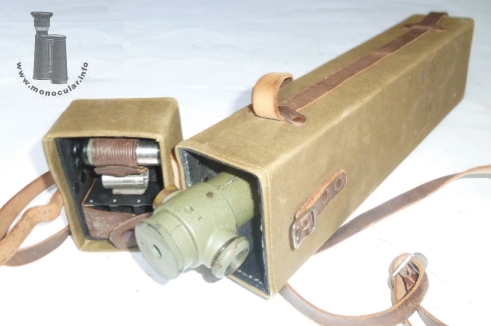
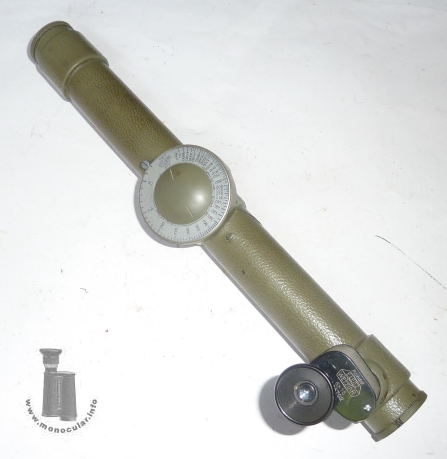
| Der Entfernungmesser hat mittig am Tubus und an der runden Okularendseite einen Stativgewinde, so dass er sowohl waagerecht als auch horizontal verwendet werden kann. In der Mitte des Rohres befindet sich ein verdickter Teil mit dem Einstellrad. Sobald das Doppelbild deckungsgleich gebracht wird, kann an der Skala auf dem Rad die Entfernung abgelesen werden. Hier ist es eine Einteilung in Fuß (168 bis 9000 Fuß bzw. unendlich = ca. 50 bis 2700 Meter). | This range-finder has a tripod thread on the middle of the tube and at its round eyepiece end so that it could be used horizontally and vertically. There is a thickened part in the middle of the barrel with an adjustment disc. As soo as you get the double image into coincidence, you can read the distance from the scale on the disc. Here we have a division in feet (168 to 9000 feet or infinity = c. 50 to 2700 meter). |
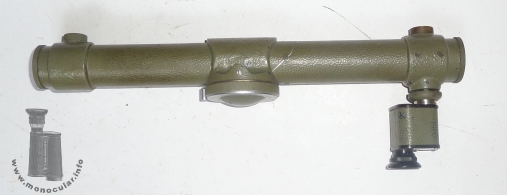

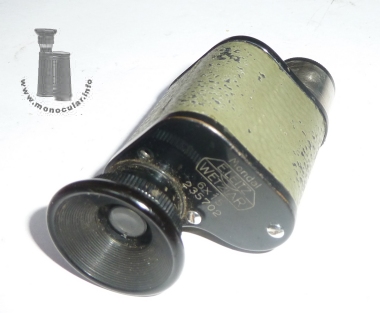
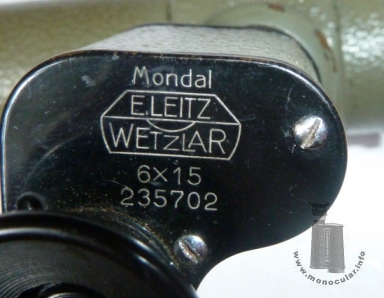
| Ob die grüne Farbe auf eine militärische Anwendung oder auf Gebrauch bei Landvermessungen, Jagd, Baumvermessung oder Eisenbahnbau usw. hinweist, ist mir bislang unbekannt. Die Beschriftung mit "feet" der mir bekannten Geräte weist allerdings auf eine Export und Gebrauch in anglo-amerikanischen Ländern hin. Die Optik ist unvergütet. Die Produktionszeit dürfte daher vor dem 2. Weltkrieg liegen. | Whether the green finish denotes a use by the military, for land surveillance, hunting, forestry or railroad cosntruction is yet unknown. The markings of known specimen with "feet" hint to an export instrument for the Anglo-American market, though. The optics are uncoated, thus this range-finder must date from before WWII. |
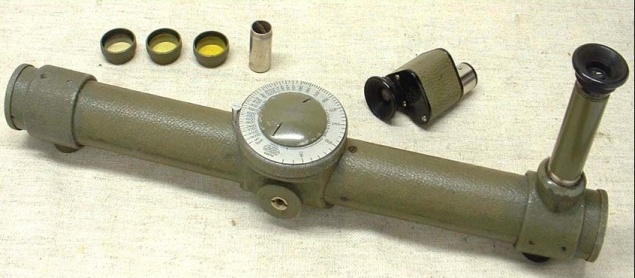
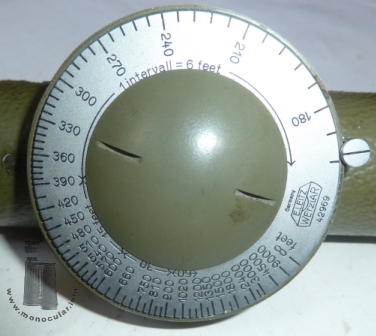
| Als weiteres Zubehör gibt es 3 Filterlinsen und ein Metallröhrchen mit an den Enden eingebauten Metallplättchen, die das Rohr in 2 Halbkreise teilen. Das Röhrchen ist an den Enden mit "A" und "B" graviert. Seine Funktion ist mir nicht bekannt. Der Entfernungsmesser ist 36cm lang, 37mm im Durchmesser und das Stellrad hat einen Durchmesser von 63mm. Der Entfernungsmesser allein wiegt 880g, die Tasche mit Zubehör ca. 800g. |
Other accessories are three filter glasses and a metal tube with a small plate at each end dividing the view into two semi-circles. The tube is marked with "A" and "B" at its ends. Its function is yet uncertain. The range-finder is 36cm long and 37mm in diameter. The adjustment disc is 63mm in diameter. The range-finder alone weihgs 880g. The canvas case and the accessories weigh about 800g. |
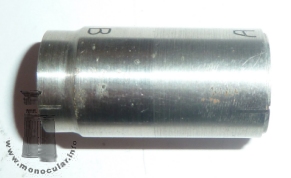
| Zwei ähnliche Entfernungsmesser mit 20cm und 40cm Basis, FARNO und FARDI, und 3x Galilei-Fernrohr stellte Leitz ebenfalls zwishcen 1910-1930 her. | Two similar range-finders with a 20cm and a 40cm base, the FARNO and FARDI, with a 3x Galilean scope were also made by Leitz between 1910 and 1930. |
.jpg)
Fotos: Zeun; 7 Ebay

